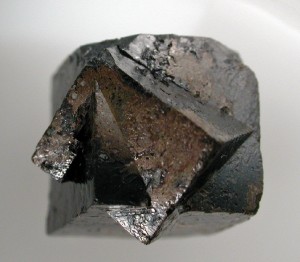Our planet’s interior is complex and has many layers. Their formation and structure contain many unsolved mysteries. But new research is providing some clues about how Earth’s internal structure may have evolved.
If you were to take a journey to the centre of the Earth you would find most stuff there is made of just three elements, at least until you’re about around 3000 km below the surface. These elements – oxygen, silicon and magnesium (plus a little bit of iron) – make up more than 90% of Earth’s “ceramic” mantle. Electrically and thermally insulating, the minerals of the mantle are the stony part of the planet.
But as you go deeper, things suddenly change. About midway to the centre, you cross a boundary from the stony mantle into the metallic core, initially liquid in its upper stretches, and then solid right in the centre of the Earth. The chemistry changes too, with almost all of the core being composed of iron.
The boundary between the metallic core and rocky mantle is a place of extremes. In physical characteristics, Earth’s metallic liquid outer core is as different to the rocky mantle as the seas are from the ocean floor. One might imagine an inverted world that has storms and currents of flowing red-hot metal in the molten outer core. It is this flow of metal in the core that gives Earth its magnetic field, protects us from the solar storms that constantly bombards us, and has allowed life to thrive.
How did such distinct layers of material end up next to each other? In a paper published in the journal Nature Geoscience, a group of scientists led by Wendy Mao of Stanford University have shown how metallic iron may be squeezed out of rocky silicates at depths of around 1000km beneath the crust.

Filaments of iron join together at depth in the Earth to allow molten metal to flow and form a core. Nature Geoscience
Experiments on mixtures of silicate minerals and iron cooked up in the lab show that iron sits in tiny isolated lumps within the rock, remaining trapped and pinned at the junctions between the mineral grains. This observation has led to the view that iron only segregates in the early stages of planetary formation, when the upper part of the silicate mantle was fully molten. It is thought that droplets of iron rained down through the upper mantle and pooled at its base, then sank as large “diapirs” driven by gravity. These fell through the deeper solid mantle to eventually form a core.
Mao’s work suggests that this model needs revising. The team used intense X-rays to probe samples held at extreme pressure and temperature squeezed between the tips of diamond crystals. They found that when pressure increases deep into the mantle, iron liquid begins to wet the surfaces of the silicate mineral grains. This means that threads of molten iron can join up and begin to flow in rivulets through the solid mantle, a process called percolation. More importantly, this process can occur even when the mantle is not hot enough to form a magma ocean.

The percolation of iron deep in the Earth provides a multi-stage route to forming a core, early in the planet’s history. Nature Geoscience
“In order for percolation to be efficient, the molten iron needs to be able to form continuous channels through the solid,” Mao explained. “Scientists had said this theory wasn’t possible, but now we’re saying, under certain conditions that we know exist in the planet, it could happen. So this brings back another possibility for how the core might have formed.”
Commenting on the results, Geoffrey Bromiley of the University of Edinburgh said “This new data suggests that we cannot assume that core formation is a simple, single stage event. Core formation was a complex, multi-stage process which must have had an equally complex influence on the subsequent chemistry of the Earth.”
Mao’s data raises important questions about how we start the formation of cores in planets. The prevailing idea in earth sciences is that studying the cores of meteorites and asteroids may help reveal insights about our own planet. But, Bromiley said, “their deep percolation model implies that early core formation can only be initiated in large planets. As a result, the chemistry of the Earth maybe have been ‘reset’ by core formation in a markedly different way from smaller planets and asteroids.”
He added, “The challenge now lies in finding a way to model the numerous processes of core formation to understand their timing and subsequent influence on the chemistry of not just the Earth, but also the other rocky bodies of the inner solar system.”
Bromiley and his colleagues are now investigating whether other factors might influence structure formation, like the deformation that asteroids and other bodies might have experienced on their chaotic pathways through the early Solar System. His work is adding other interesting questions. “We are increasingly observing metallic cores in bodies much smaller than the Earth. What process might have aided core formation in bodies which were never large enough to permit percolation of core forming melts at great depths?”
![]()
This article was originally published at The Conversation.
Read the original article.




